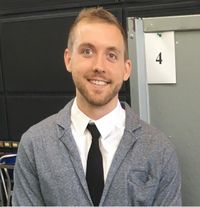CAZypedia celebrates the life of Senior Curator Emeritus Harry Gilbert, a true giant in the field, who passed away in September 2025.
CAZypedia needs your help!
We have many unassigned pages in need of Authors and Responsible Curators. See a page that's out-of-date and just needs a touch-up? - You are also welcome to become a CAZypedian. Here's how.
Scientists at all career stages, including students, are welcome to contribute.
Learn more about CAZypedia's misson here and in this article. Totally new to the CAZy classification? Read this first.
Difference between revisions of "User:Alex Anderson"
Harry Brumer (talk | contribs) (Created page with "200px|right '''This is an empty template to help you get started with composing your User page.''' You should begin by opening this page for ed...") |
|||
| (10 intermediate revisions by 2 users not shown) | |||
| Line 1: | Line 1: | ||
| − | [[Image: | + | [[Image:Aa.jpg|200px|right]] |
| − | |||
| − | + | Dr. Anderson recieved his BSc (2017) and MSc (2019) from Wilfrid Laurier University (Canada) in the lab of Dr. [[User:Joel Weadge|Joel Weadge]], alongside [[User:Michael Suits|Michael Suits]], at WLU where he studied the structure and function of the cellulose phosphoethanolamine transferase BcsG in ''E. coli''. Dr. Anderson received his Ph.D. from the University of Guelph in 2024 under the supervision of Dr. [[User:Anthony Clarke|Anthony Clarke]] where he worked on the mechanism of peptidoglycan ''O''-acetyltransferases. Dr. Anderson is presently a postdoctoral fellow at McMaster University in the lab of Dr. John Whitney where he studies Type VI-secreted polymorphic toxins that target carbohydrate structures. | |
| + | |||
| − | + | Dr. Anderson and colleagues have demonstrated the structures of: | |
| − | |||
| − | |||
| − | '' | + | CAZy-unclassified ''Escherichia coli'' phosphoethanolamine transferase BcsG (6PCZ/6PD0) <cite>Anderson2020</cite> |
| + | [[GH5]] ''Clostridioides difficile'' endo-β-glucanase CcsZ (6UJE/6UJF) <cite>Scott2020</cite> | ||
| + | CAZy-unclassified ''Campylobacter jejuni'' peptidoglycan O-acetyltransferase PatB (8TLB) | ||
| + | |||
---- | ---- | ||
<biblio> | <biblio> | ||
| − | # | + | #Anderson2020 pmid=32152228 |
| + | #Scott2020 pmid=33264329 | ||
| + | </biblio> | ||
| − | |||
<!-- Do not remove this Category tag --> | <!-- Do not remove this Category tag --> | ||
[[Category:Contributors|Anderson,Alex]] | [[Category:Contributors|Anderson,Alex]] | ||
Latest revision as of 12:18, 23 April 2024
Dr. Anderson recieved his BSc (2017) and MSc (2019) from Wilfrid Laurier University (Canada) in the lab of Dr. Joel Weadge, alongside Michael Suits, at WLU where he studied the structure and function of the cellulose phosphoethanolamine transferase BcsG in E. coli. Dr. Anderson received his Ph.D. from the University of Guelph in 2024 under the supervision of Dr. Anthony Clarke where he worked on the mechanism of peptidoglycan O-acetyltransferases. Dr. Anderson is presently a postdoctoral fellow at McMaster University in the lab of Dr. John Whitney where he studies Type VI-secreted polymorphic toxins that target carbohydrate structures.
Dr. Anderson and colleagues have demonstrated the structures of:
CAZy-unclassified Escherichia coli phosphoethanolamine transferase BcsG (6PCZ/6PD0) [1]
GH5 Clostridioides difficile endo-β-glucanase CcsZ (6UJE/6UJF) [2]
CAZy-unclassified Campylobacter jejuni peptidoglycan O-acetyltransferase PatB (8TLB)
Error fetching PMID 33264329:
- Error fetching PMID 32152228:
- Error fetching PMID 33264329:
